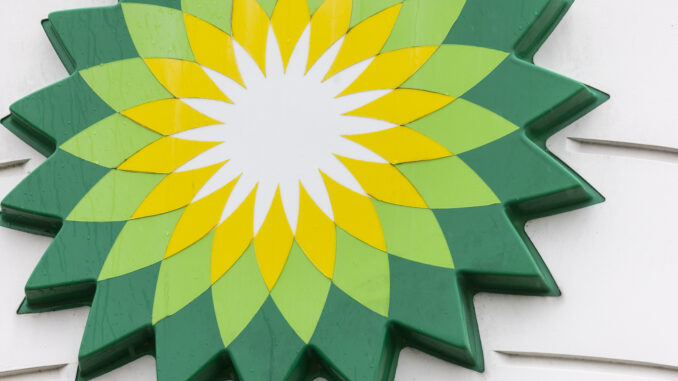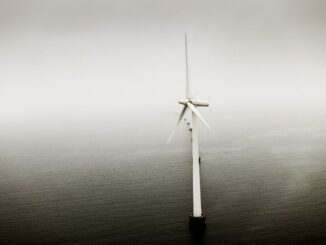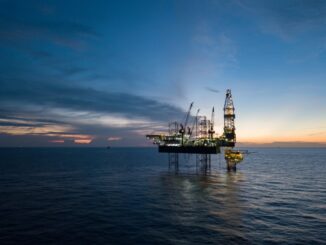
(Bloomberg) – For a company that made its name with frontier oil discoveries from Iran to Alaska, bp Plc is notably absent from today’s hottest new oil plays. The company’s head of exploration and production is just fine with that.

Investors in ExxonMobil Corp. have the excitement of huge discoveries in Guyana, and TotalEnergies SE and Shell Plc can look to promising deep-water finds in Namibia. But for bp, real value lies in an intensely drilled region where the company has decades of experience — the Gulf of Mexico.
“I don’t feel jealous,” said Gordon Birrell, executive vice president of production and operations, when asked about his rivals’ recent exploration success. “We’ve got a lot of resource to be developed.”
Exploration has long been a key metric for the oil and gas industry, but these days it has added piquancy for bp. The London-based company’s total proved oil and gas reserves of 6.8 Bboe are about a third less than its European peers Shell and TotalEnergies. That gap grows to 40% to 60% when compared to U.S. majors ExxonMobil and Chevron Corp.
The relative deficit in bp’s reserves is largely the result of its exit from Russia’s state-run oil giant Rosneft PJSC, following Moscow’s invasion of Ukraine in early 2022. That move was followed by most other major oil companies, many of which have written off the value of their investments in the country and see little prospect of returning. Yet the sting was greatest for bp, which took an impairment of $24.4 billion, lost a third of its oil and gas production and about 50% of its reported reserves.
“We did exit Russia, we did write the reserves off. It was a big number, there’s no question,” Birrell said in an interview in London. “But what we’re left with is 18 billion barrels of good stuff, so it’s not a problem.”
About half of those 18 Bbbl — a number that quantifies resources that meet bp’s internal expectations for return on investment and is larger than figure for proved reserves under the official Securities and Exchange Commission’s definition — are in the Gulf of Mexico. bp’s plan for the region relies on discoveries made more than a decade ago that were initially too difficult to develop, but can now be tapped thanks to technological advances.
Fields such as Kaskida and Tiber are found in a geological layer known as the Paleogene — a formation that’s under such high pressure that it exceeded the capability of most equipment when the discoveries were made. After the initial exploration drilling, bp had to step back and wait for drilling technology to improve.
“That code has been cracked and bp held on to its leases Kaskida and Tiber,” said Mfon Usoro, a principal analyst at researcher Wood Mackenzie Ltd. “The technology is commercial in the market, that’s what has brought these projects to the forefront.”
Today’s rigs can withstand pressures as high as 20,000 pounds per square inch, making it possible for bp to complete the wells. Still, tapping the Paleogene doesn’t come cheap.
“Deeper means higher cost,” said Usoro. Wood Mackenzie calculates that the cost of producing a barrel from the Paleogene is in the mid-to-high $40s. That’s more expensive than other parts of the Gulf of Mexico and far above the $7 and $9 at bp’s assets in the Permian and the Eagle Ford shale formations, respectively, according to company data.
But it’s still competitive in a global portfolio, thanks to the region’s attractive fiscal terms and widespread existing infrastructure, Usoro said. “With the Gulf of Mexico, you tend to have that long, stable cash flow after that upfront investment,” she said.
bp is on track to invest $7 billion in the Gulf of Mexico from 2022 to 2025 and expects 350,000 boed of production there in the second half of this decade, up from less than 270,000 bpd last year.
Neither Kaskida nor Tiber have yet been given the green light. bp hopes to reach a final investment decision on the former project this year, with Tiber following later. The main challenge remaining in the developments is finding slots in shipyards to build their offshore production facilities, Chief Executive Officer Murray Auchincloss told analysts in February.
Sustaining production. Birrell doesn’t rule out exploring for more oil and gas or acquiring companies for their reserves. That’s a change in tone for bp, which under former Chief Executive Officer Bernard Looney set out a plan to radically embrace decarbonization and renewable energy.
That strategy has gone through several iterations, with the most recent tweak last year when it slowed its planned reduction in oil and gas output. That’s not enough for activist investor Bluebell Capital Partners, which argues that the speed of bp’s shift away from fossil fuels is misguided and hurting the share price.
Like most bp veterans, Birrell has spent his career focused on oil and gas. He rose through the ranks with postings in the North Sea and Azerbaijan, becoming head of the company’s upstream division in 2020. He has remained on the top leadership team through both a major restructuring that same year, and the surprise resignation of Looney last year in a scandal over the former CEO’s undisclosed relationships with colleagues.
In Birrell’s view, the only thing that has changed in bp’s strategy is the level of pragmatism. The company will keep pace with society’s broader transition to cleaner energy and won’t race ahead with technologies that aren’t yet economic, he said.
And through this long process, oil and gas still has a part to play.
“Depending on what you want to do from 2030 to 2040, then we may need to go and find more barrels,” he said. “We have the core capability to go exploring in the world. It’s still retained in bp, there’s no question about it.”
Take the Survey at https://survey.energynewsbeat.com/
ENB Top News
ENB
Energy Dashboard
ENB Podcast
ENB Substack



